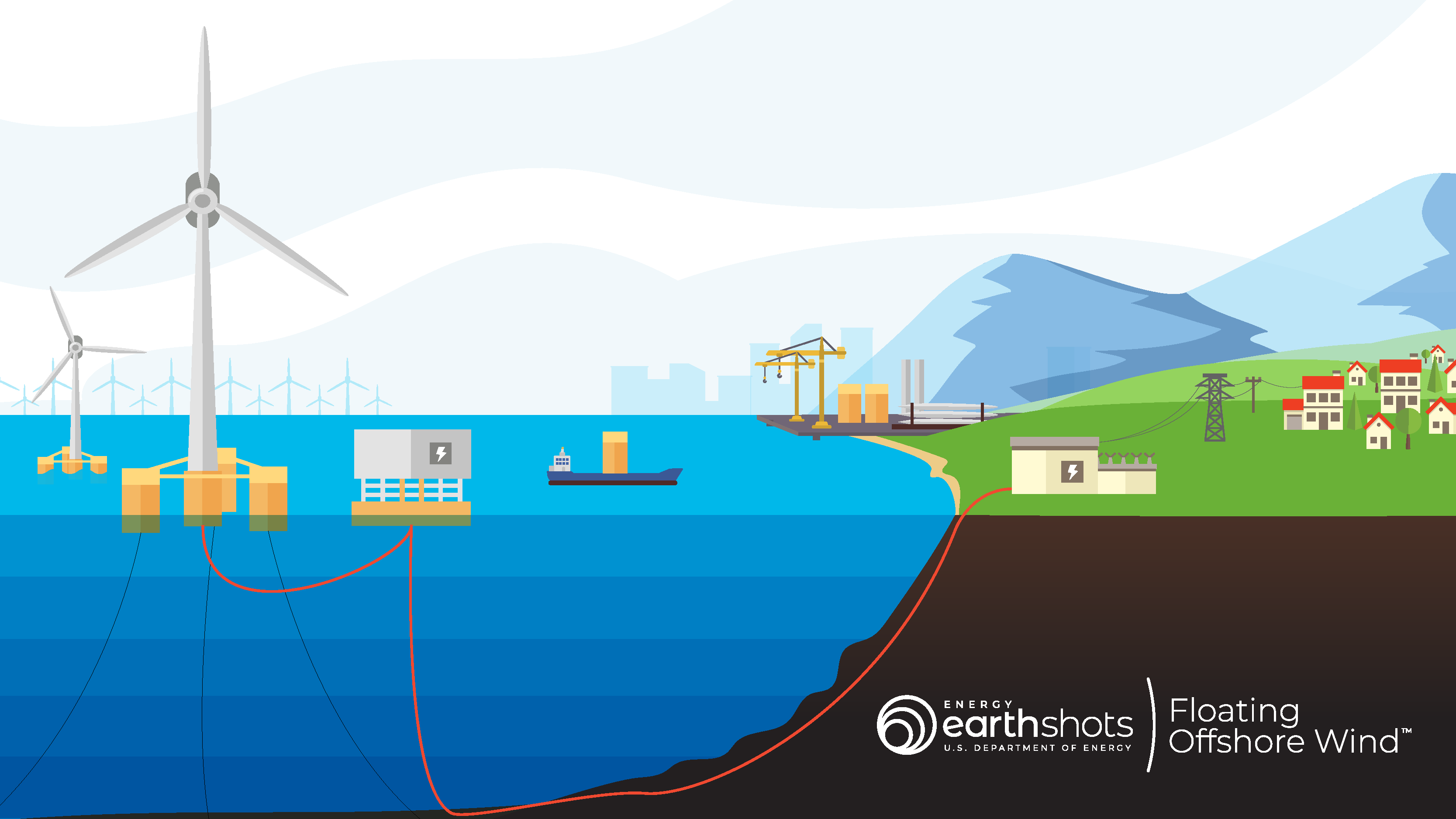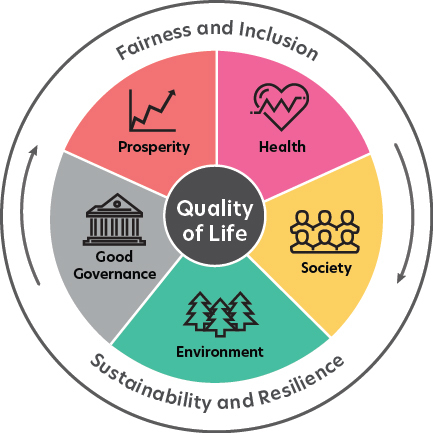The Rising Costs Of Offshore Wind Energy: A New Challenge

Table of Contents
Increased Material and Manufacturing Costs
The escalating price of raw materials and manufacturing bottlenecks significantly impact the overall cost of offshore wind projects.
Steel and Concrete Prices
The construction of offshore wind turbines requires vast quantities of steel and concrete for the foundations and turbine structures. Global inflation and supply chain disruptions, exacerbated by geopolitical events, have driven up the prices of these essential materials dramatically.
- Price Fluctuations: Steel and concrete prices have experienced significant volatility in recent years, making accurate project budgeting extremely difficult. This uncertainty increases financial risk for developers.
- Budgetary Impact: Increased material costs directly translate into higher project budgets, potentially delaying or even canceling projects that are no longer economically viable.
- Mitigation Strategies: Several strategies can mitigate the impact of volatile material prices. These include exploring alternative materials such as composite materials, optimizing designs to minimize material usage, and securing long-term supply contracts to lock in prices.
Turbine Component Shortages
Shortages of specialized components, such as generators, gearboxes, and blades, are causing significant delays and cost overruns in offshore wind projects.
- Project Delays & Cost Overruns: Component shortages can lead to substantial delays in project timelines, resulting in increased labor costs, financing charges, and ultimately, higher overall project costs.
- Manufacturing Capacity: The current global manufacturing capacity for these specialized components may not be sufficient to meet the rapidly growing demand for offshore wind energy.
- Solutions: Diversifying suppliers, investing in domestic manufacturing capacity, and fostering collaboration within the supply chain are crucial for addressing component shortages and reducing costs.
Escalating Installation and Maintenance Expenses
The unique challenges of offshore operations significantly contribute to the rising costs of offshore wind energy.
Specialized Vessels and Equipment
Installing and maintaining offshore wind turbines requires specialized vessels and equipment capable of operating in harsh marine environments.
- Complex Offshore Operations: Offshore installation and maintenance are complex and risky undertakings, demanding highly skilled personnel and advanced technology.
- High Operational Expenditure: The cost of chartering specialized vessels, deploying specialized equipment, and ensuring the safety of personnel during offshore operations is substantial.
- Technological Advancements: Investing in innovative technologies like remotely operated vehicles (ROVs) and autonomous systems can potentially reduce operational expenses in the long run.
Labor Costs and Skilled Workforce Shortages
The offshore wind industry faces a growing demand for skilled labor, leading to rising wages and increased competition for qualified personnel.
- Workforce Training: Significant investment in workforce training programs is needed to develop a skilled workforce capable of meeting the industry's growing needs.
- Automation & Robotics: The increasing use of automation and robotics in installation and maintenance tasks can help mitigate labor shortages and reduce overall labor costs.
- Project Feasibility: High labor costs directly impact the economic feasibility of offshore wind projects, potentially making them less attractive to investors.
Permitting and Regulatory Hurdles
Navigating the complex regulatory landscape adds considerable time and expense to offshore wind projects.
Environmental Impact Assessments
Offshore wind projects require extensive environmental impact assessments (EIAs) and permitting processes to ensure minimal disruption to marine ecosystems.
- Environmental Regulations: Stringent environmental regulations are in place to protect marine life and habitats, leading to lengthy review periods.
- Compliance Costs: Conducting comprehensive EIAs and obtaining necessary permits is a time-consuming and costly process.
- Streamlined Processes: Streamlining permitting processes and improving regulatory efficiency can significantly reduce project timelines and costs.
Grid Connection Challenges
Connecting offshore wind farms to the onshore electricity grid presents significant infrastructure challenges and substantial costs.
- Infrastructure Requirements: Upgrading existing grid infrastructure or building new transmission lines to accommodate the large influx of power from offshore wind farms is often expensive.
- Grid Upgrades: The cost of grid upgrades and reinforcement can represent a significant portion of the overall project budget.
- Cost Optimization: Careful planning, the use of advanced grid technologies, and collaborative efforts between developers and grid operators can help optimize grid connection costs.
Conclusion
The rising costs of offshore wind energy, driven by increased material and manufacturing costs, escalating installation and maintenance expenses, and complex permitting processes, represent a significant challenge to the widespread adoption of this crucial renewable energy source. These escalating costs could slow down the renewable energy transition, potentially impacting energy security and climate goals. Addressing the rising costs of offshore wind energy is paramount for a successful transition to clean energy. We need collaborative efforts across industry, government, and research to find innovative solutions, including advancements in technology, streamlined regulations, and improved supply chain management, to unlock the full potential of this vital technology. Let's work together to reduce the cost of offshore wind energy and accelerate the deployment of this essential renewable resource.

Featured Posts
-
 Challenges Mount For Nigel Farages Reform Uk Amidst Internal Dispute
May 03, 2025
Challenges Mount For Nigel Farages Reform Uk Amidst Internal Dispute
May 03, 2025 -
 Kommentariy Zakharovoy Situatsiya S Emmanuelem I Brizhit Makron
May 03, 2025
Kommentariy Zakharovoy Situatsiya S Emmanuelem I Brizhit Makron
May 03, 2025 -
 Enhancements To The Fortnite Item Shop A New Player Feature
May 03, 2025
Enhancements To The Fortnite Item Shop A New Player Feature
May 03, 2025 -
 Improving Youth Mental Healthcare In Canada Lessons Learned From A Global Commission
May 03, 2025
Improving Youth Mental Healthcare In Canada Lessons Learned From A Global Commission
May 03, 2025 -
 Improving Mental Health Literacy Through Effective Education
May 03, 2025
Improving Mental Health Literacy Through Effective Education
May 03, 2025
Latest Posts
-
 Ceki Dy Te Vdekur Pas Sulmit Me Thike Ne Qender Tregtare
May 03, 2025
Ceki Dy Te Vdekur Pas Sulmit Me Thike Ne Qender Tregtare
May 03, 2025 -
 Incidenti Tragjik Ne Ceki Sulm Me Arme Te Bardhe Ne Qender Tregtare
May 03, 2025
Incidenti Tragjik Ne Ceki Sulm Me Arme Te Bardhe Ne Qender Tregtare
May 03, 2025 -
 Sulm Vdekjeprures Me Thike Ne Qender Tregtare Ne Republiken Ceke
May 03, 2025
Sulm Vdekjeprures Me Thike Ne Qender Tregtare Ne Republiken Ceke
May 03, 2025 -
 Dy Te Vdekur Pas Sulmit Me Thike Ne Qender Tregtare Ne Ceki
May 03, 2025
Dy Te Vdekur Pas Sulmit Me Thike Ne Qender Tregtare Ne Ceki
May 03, 2025 -
 Sulm Me Thike Ne Qender Tregtare Ceke Dy Te Vdekur
May 03, 2025
Sulm Me Thike Ne Qender Tregtare Ceke Dy Te Vdekur
May 03, 2025
